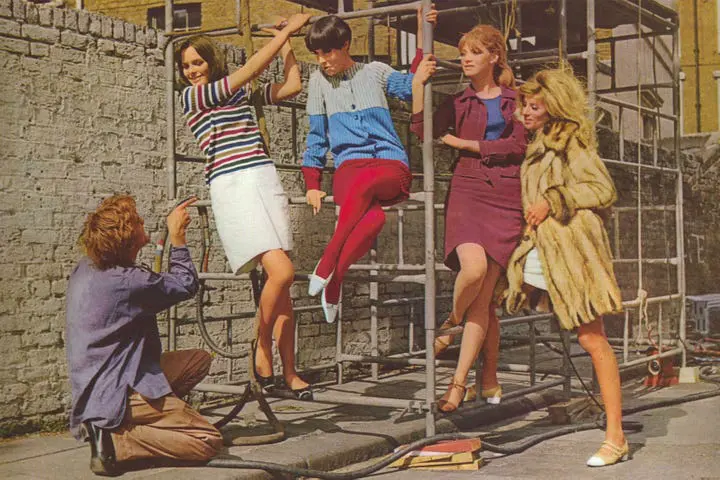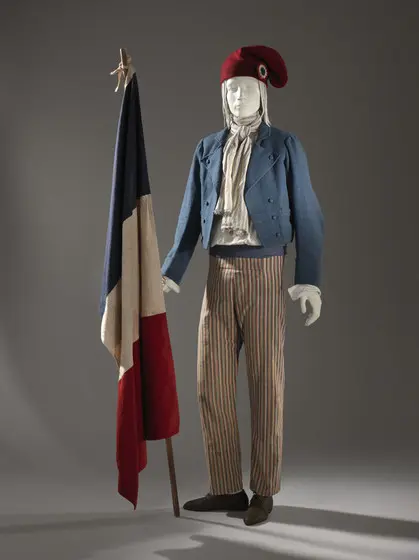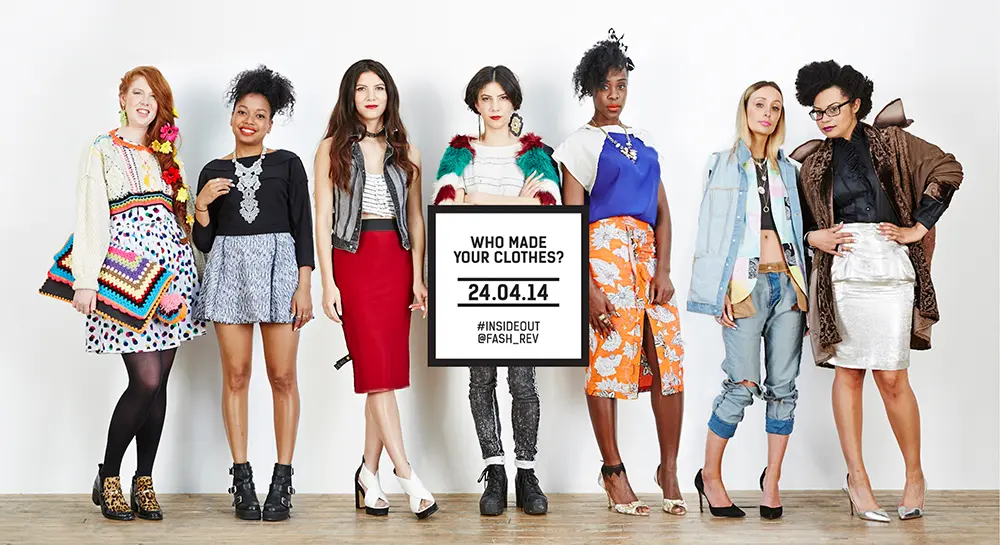The world of fashion is undergoing a profound transformation, and it’s a thrilling time to be part of this vibrant industry. As we stand at the crossroads of tradition and innovation, new ideas are surfacing, pushing against the boundaries of what fashion represents today. From sustainability to advanced technology, the need for change has never been more pressing. The call for a revolutionary shift welcomes designers, brands, and consumers alike to participate in this exciting evolution. In this piece, let’s explore the nuances of this transition and what it means for our future wardrobe choices and the environment.
The Rise of Sustainability in Fashion
In recent years, the conversation around sustainability has gained substantial traction. As consumers grow increasingly aware of the environmental and ethical ramifications of fast fashion, many are known to embrace slow fashion—a concept focused on quality over quantity. Slow fashion promotes a conscientious approach, urging brands to utilize eco-friendly fabrics and ethical production processes.
According to Fashion Revolution, sustainability is not merely a buzzword but a necessary evolution in the industry. They advocate for transparency in supply chains, enabling consumers to make informed choices. Picture this: each garment tells a story—its journey from raw material to finished product, impacted by social and environmental factors. This level of transparency can empower consumers, making each purchase feel like a personal commitment to a better world.
The narrative around sustainability does not only reside in the hands of well-known brands. Emerging designers are playing a pivotal role by implementing innovative practices. A great example is the use of recycled materials to create chic yet eco-conscious clothing lines. Each piece not only encapsulates artistic expression but also signifies a stand against wastefulness.

The Impact of Digital Transformation
Additionally, the integration of technology into fashion is rapidly changing how we create and consume clothing. Brands are now leveraging digital tools and artificial intelligence to enhance their design and production capabilities.
Imagine an AI algorithm that analyzes fashion trends and consumer behavior to predict the next big style wave. Not only does this approach minimize waste, but it also allows for more responsive and adaptive fashion design. Genera, a prominent player in this arena, utilizes AI to streamline the design-to-wholesale process, cutting down waste and accelerating the workflow—effectively pushing the fashion industry closer to a zero-waste model.
This digital revolution extends to online retail as well, with brands embracing social commerce to connect with consumers directly. Platforms such as Instagram and TikTok are not just tools for promotion; they serve as vital marketplaces where users discover and purchase new styles immediately.
Younger Generations Leading Change
The younger generations are at the forefront of demanding change. They represent a powerful consumer base that increasingly prioritizes sustainability and ethical practices when shopping for clothes. This shift in attitude signals to brands that change is not optional but rather essential for survival.
When we talk about movements, let’s look at Fashion Revolution USA. Their noteworthy initiatives advocate for fairer and more sustainable practices in fashion. Their campaigns, such as #WhoMadeMyClothes, prompt consumers to question the origins of their clothing, fostering a connection between makers and wearers. Not only does this build community, but it also places the responsibility back in the hands of the consumers.
Brands are taking notice! In response to this revolutionary spirit, an increasing number of companies are launching initiatives to reduce their carbon footprint. Collaborations between eco-friendly brands and luxury fashion houses are blossoming, presenting a unique opportunity to merge style with substance.
As we transition towards a new paradigm in fashion, it is essential to recognize the influence of social media as a tool for change. It provides a platform for consumers to voice their opinions and for brands to listen, creating a two-way street that can lead to progressive transformations within the industry. Embracing social commerce as a part of this evolution will redefine retail experiences, where shopping becomes a more engaged and societal-oriented activity.

Fashion and Technology: A Symbiotic Relationship
Technology’s influence on fashion goes beyond digital retail operations; it touches upon every aspect of the design and manufacturing process. Designers like Hussein Chalayan emphasize that technology will revolutionize fashion through new fibers and innovative production techniques. The fusion of technology and fashion paves the way for exciting prospects, such as 3D printing for creating unique fashion pieces.
This technique allows for greater customization and lower waste by producing only what is needed. Imagine attending an event and being able to design your dress on the spot—3D printed to your specifications. This kind of innovation exemplifies how technology can enhance creativity while promoting sustainability in fashion.
While integrating technology enhances the fashion industry, it also requires a cultural shift within organizations. Training staff and fostering a mindset open to adopting new tools is vital. Embracing digital transformation means letting go of traditional methods and being open to experimentation.
The Role of Consumers in Driving Change
As much as brands and designers influence the fashion landscape, consumers hold significant power as well. Being informed and taking conscious action, individuals can advocate for sustainability. Leading by example, consumers are making choices that reflect their values—opting for brands that prioritize eco-friendly practices and supporting artisans and local businesses.
Furthermore, the concept of capsule wardrobes is gaining popularity. This minimalist approach encourages individuals to curate a versatile collection of timeless pieces that can be mixed and matched, reducing the frequency of purchases while cultivating a unique personal style.
Through education and advocacy, consumers are shaping a demand for ethical fashion. This reinforces the idea that fashion can change based on culture and societal needs rather than simply trends. For those looking to make a switch in their shopping habits, consider investing in quality brands, buying secondhand clothing, or even practicing DIY fashion to repurpose existing garments.
As we explore the multifaceted world of fashion, each contribution—whether it’s from designers, brands, or individual consumers—holds immense significance in steering the industry towards a more sustainable future.
A Cultural Shift: The Importance of Ethical Practices
To fully embrace a revolution in fashion, industries must recognize the importance of ethical practices. This means prioritizing fair labor, equitable pay, and responsible sourcing of materials. The fashion industry, traditionally marred by unfair treatment of workers, must reevaluate its standards and practices.
Fashion Revolution highlights the intent behind the label: what do those brands stand for? Are they committed to ethical production? Ensuring that the people who create clothing receive fair pay and work in safe conditions is crucial. This ethical commitment revitalizes the soul of fashion.
Brands that adopt ethical practices not only resonate more with modern consumers, but they also foster a loyal customer base. When customers recognize a brand’s commitment to sustainable and equitable practices, they are more likely to share their positive experiences with others—spreading awareness through word-of-mouth just as potent as any marketing campaign.
Take the example of brands like Eileen Fisher that champion restorative practices in fashion, allowing consumers to feel good about their purchases. Such movements empower individuals to support businesses that align with their values, reinforcing the shift towards embracing a new kind of fashion—one rooted in compassion and understanding.

Community and Collaboration
Change is often fueled by collaboration. The coalescing of ideas and talents creates fertile ground for innovation to blossom. Fashion brands, artisans, and consumers can work together to inspire transformations that reshape the industry. Collaborations—whether between established brands and emerging designers or between various sectors of the fashion world—can drive change.
For instance, when luxury brands partner with sustainable fabric manufacturers, they make a statement about the importance of ethical sourcing within the industry. Such collaborative initiatives shine a spotlight on sustainable practices while benefiting all parties involved, creating a lasting impact within communities.
Moreover, platforms fostering exchanges between seasoned fashion veterans and new creatives are invaluable. They allow fresh ideas to circulate and encourage the exploration of unconventional design aesthetics. Workshops, think tanks, and collaborative projects can invigorate the fashion landscape, enabling individuals to share insights and leverage collective knowledge.
Innovation Through Education
Education plays a crucial role in instigating change. As fashion evolves, so should our understanding of its cumulative impact. Organizations like Fashion Revolution provide programming, events, and educational resources aimed at raising awareness about sustainability and ethics within the fashion industry.
To see a more significant change in habits and attitudes, schools and universities must incorporate sustainability and ethical practices into their curriculums, equipping aspiring designers with the tools and knowledge to innovate for a sustainable future. When these future leaders understand the importance of their impact, they will be better prepared to approach fashion holistically.
Let’s think ahead: in 10 years, what will the fashion landscape look like? A generation of designers who champion sustainability might very well create pieces that seamlessly merge style with social responsibility, crafting a culture of consciousness within the fashion sphere.

Looking to the Future: The New World of Fashion
As we look towards the future, the promise of a new world of fashion unfolds. One where sustainability, technology, and ethical practices converge to create a vibrant tapestry of style and substance. The shift we are experiencing is not just a passing trend; it symbolizes the dawning of a new era where fashion is reshaped by the collective consciousness of designers, brands, and consumers.
Fashion can act as a mirror reflecting our values and our societal progression. Let’s harness that power to pave the way for positive changes in our world. The future of fashion is not solely defined by those who create the clothes but by each of us who chooses what to wear. Our choices can lead to support for local artisans, sustainable practices, and ultimately a healthier planet.
Each garment we choose can contribute to a cycle of sustainability, setting a precedent for future generations. By embracing practices that prioritize the planet and its people, we can radically shift the narrative surrounding fashion. It is up to us to choose creatively and consciously—but remember, it starts with we as individuals who, combined, can form a revolution.
Our Role in the Transformation
So, what can each of us do in this fashion revolution? It starts with inquiry. We need to ask not just who made our clothes but also how they were made. By holding brands accountable, we empower ourselves as conscious consumers. The revolution is within each of us—it’s about taking small steps that foster significant change.
Every time we choose secondhand over new, support ethical brands, or share information with our networks, we contribute to a broader movement. It’s crucial to lead by example within our circles and encourage others to take action toward conscious consumption.
Our individual choices will galvanize this industry shift, making it clear that we don’t just want change; we demand it. While the path toward a more sustainable fashion future may seem daunting, we can create the change we want to see within our wardrobes and beyond.
Source: www.nytimes.com
Hi, I’m Sarah, a 30-year-old journalist with a passion for storytelling and uncovering the truth. I strive to bring important issues to light and connect with my audience through compelling narratives.


